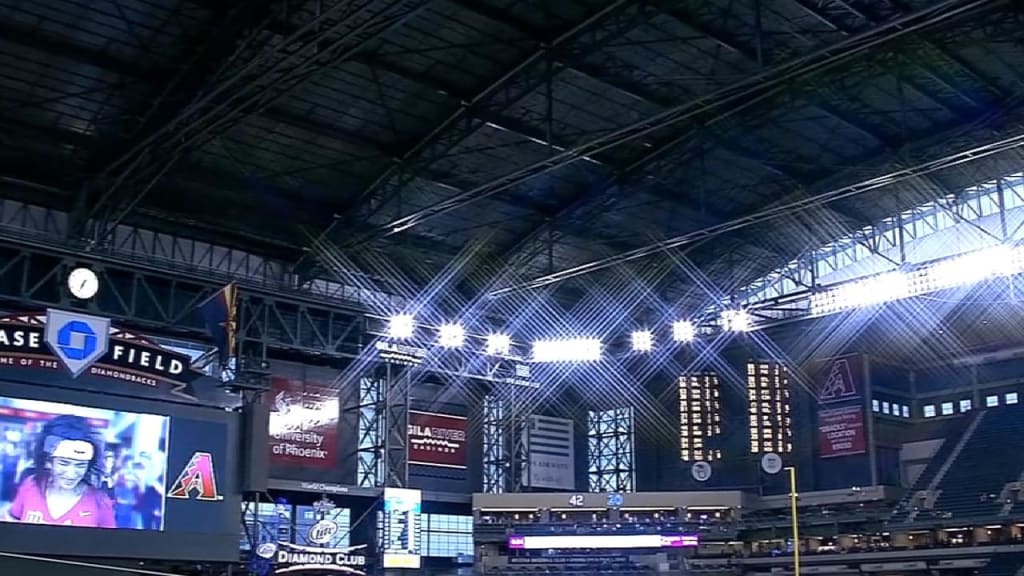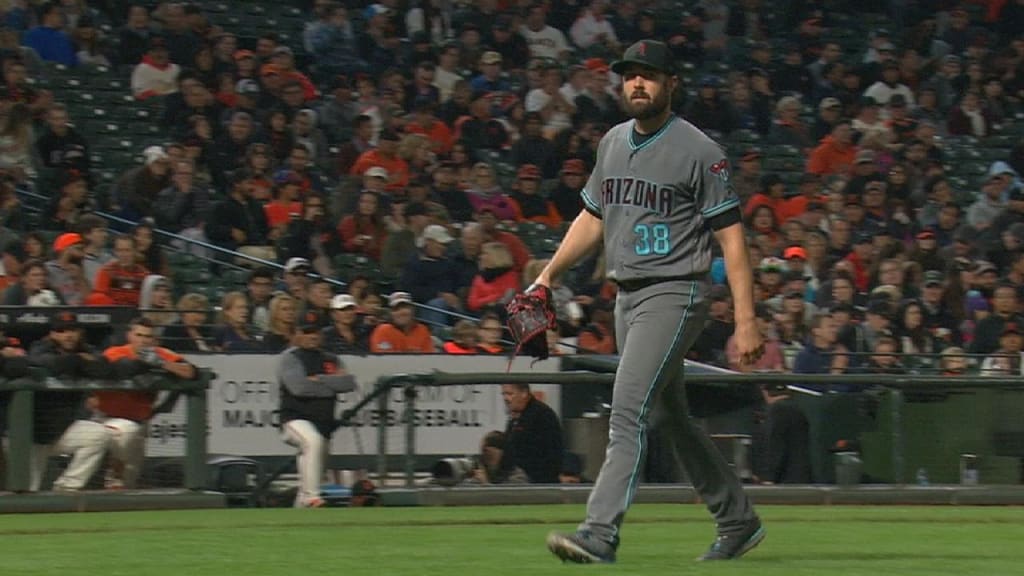Humidor effects could boost Ray to star status
This browser does not support the video element.
In 2018, baseballs at Chase Field will be stored in a humidor in an attempt to combat the effects of the hot, dry desert environment. The science is pretty clear on what this does: A humidor will help keep the balls from drying out so easily. More water retained means the ball is slightly heavier, less bouncy and more difficult to hit hard.
That's good for pitchers, and less so for hitters, obviously. As some extremely well-researched and in-depth physics studies have suggested, this could have a pretty massive effect.
"I am very comfortable saying that, with the humidor running at 50 percent and 70 degrees," wrote Dr. Alan Nathan early last year, "there will [be] a reduction in home run production at Chase by 25-50 percent."
You're already wondering what that means for sluggers Paul Goldschmidt and Jake Lamb, surely. We're more interested in what this means for Robbie Ray, who is coming off a fantastic year in which he missed a ton of bats but also allowed a lot of loud contact. What does it mean if one of baseball's strikeout kings now gets a home park in which contact shouldn't be as hard?
This browser does not support the video element.
Ray finished seventh in the National League Cy Young Award balloting in 2017, posting a 2.89 ERA. He also struck out 218 batters for the second year in a row. Of the 134 pitchers who threw 100-plus innings, only four (Chris Sale, Max Scherzer, Corey Kluber and Danny Salazar) had a higher strikeout percentage than Ray's 32.8 percent.
The problem for Ray is that when batters did make contact, it was hard contact more often than any other regular starting pitcher in baseball. Last year, 172 pitchers allowed 200 balls in play as starters, and no one allowed more of them to be above 95 mph in exit velocity than Ray.
Highest hard-hit rate allowed, 2017 (as starter)
42.3 percent -- Ray
41.6 percent -- Amir Garrett
40.9 percent -- Chris Tillman
40.5 percent -- Dylan Covey
39.9 percent -- Jesse Chavez
That's not a list you want to lead, obviously, considering the struggles of the other four names. (Tillman, for example, had a 7.84 ERA.) Across the Majors, batters hit .564 with a 1.170 slugging on balls hit 95 mph or higher, and just .226 with a .270 slugging percentage on balls hit below 95 mph. Ray wasn't immune to that. He allowed a .449 average and a .970 slugging when giving up those hard-hit balls, and just a .219 average and .252 slugging rate below it. Anything that could depress exit velocity, as a humidor might, figures to be a huge benefit for him.
But Ray also led a much better list, leading all starters (of the 228 of them who induced at least 200 swings) in whiff rate. By getting a miss on 34.6 percent of the swings he saw, he topped Salazar, Kluber and Scherzer. He was a lesson in extremes.
So Ray had a fantastic season despite often being hit hard when contact was made, which tells you a lot about how hard he was to hit in the first place.
There's more, too. Last year at home, Ray posted a 4.08 ERA and allowed a .316 wOBA, but only a 1.86 ERA and a .250 wOBA on the road. In 2016, he had a 5.36 ERA at home, and a 4.50 mark on the road. In 2015, his first year with the D-backs, he had a 4.88 ERA at home and just a 2.49 ERA away from Arizona.
If that sounds extreme, well, it is. Over the past three seasons, there were 135 pitchers who faced at least 500 hitters both at home and on the road. Ray had an ERA difference of 1.77 (4.78 ERA at home, 3.01 mark on the road), the fifth-largest difference in the Majors.
Maybe wOBA tells a better story, considering ERA can be affected by relievers. Ray has allowed a .340 wOBA at home with Arizona, and just a .285 wOBA mark on the road. That gap of .055 was the fourth largest, and look at the top five:
Largest home/road wOBA gaps, 2015-17 (as starters)
+.101 -- Tyler Chatwood (.378 home, .277 road)
+.083 -- Carlos Carrasco (.332 home, .250 road)
+.062 -- Yu Darvish (.318 home, .255 road)
+.055 -- Ray (.340 home, .285 road)
+.048 -- Anthony DeSclafani (.341 home, .293 road)
Chatwood's home splits were piled up at hitter's paradise Coors Field, a fact that was well-noted when he signed with the Cubs this winter. Darvish (with Texas, mostly) and DeSclafani (Cincinnati) have pitched in well-known hitter's parks, and FanGraphs has Cleveland as 2017's fifth most hitter-friendly park. These pitchers have all had to deal with tough home conditions. So has Ray.
Make no mistake, Chase Field's reputation for being hitter-friendly is well deserved. When we looked at Comerica Park's surprising hitter-friendly nature, we compared the 2017 performance of hitters at their home and road parks and also found that D-backs hitters scored 102 more runs, slugged 94 points higher and had a wOBA 51 points higher at home than on the road. Every single item was second-most behind only Coors Field.
That's consistent with most park factor metrics. According to FanGraphs and Baseball Prospectus, Chase Field was the second-toughest ballpark for pitchers, and it was the third toughest according to ESPN.
So what does this mean for Ray? It's not just about home runs, obviously, and we don't exactly have a lot of experience with humidors, considering Coors Field is the only other ballpark with one. We've learned from the Rockies that you can't simply take their road stats and double them to know what their "true" lines would look like -- though it's extremely tempting to point out that Ray's road numbers in 2017 (1.86 ERA, 34.8 percent strikeout rate) almost exactly mirror Scherzer's (1.82, 34.5), and Ray's road wOBA since 2015 (.285) is equal to Justin Verlander's 2017 mark.
Consider this a notice. Ray was one of the best pitchers in baseball in 2017, and he did it at a home park that seemed to conspired against him at every turn. If the humidor cuts down offense like the physics suggest -- it did work in Denver, cutting home runs by about 25 percent -- to make it more of a league-average ballpark, Ray could get a boost. If it actually makes it a pitcher's park, Ray could be the 2018 NL Cy Young Award winner. He's that good. Chase Field just hasn't helped him show it.

